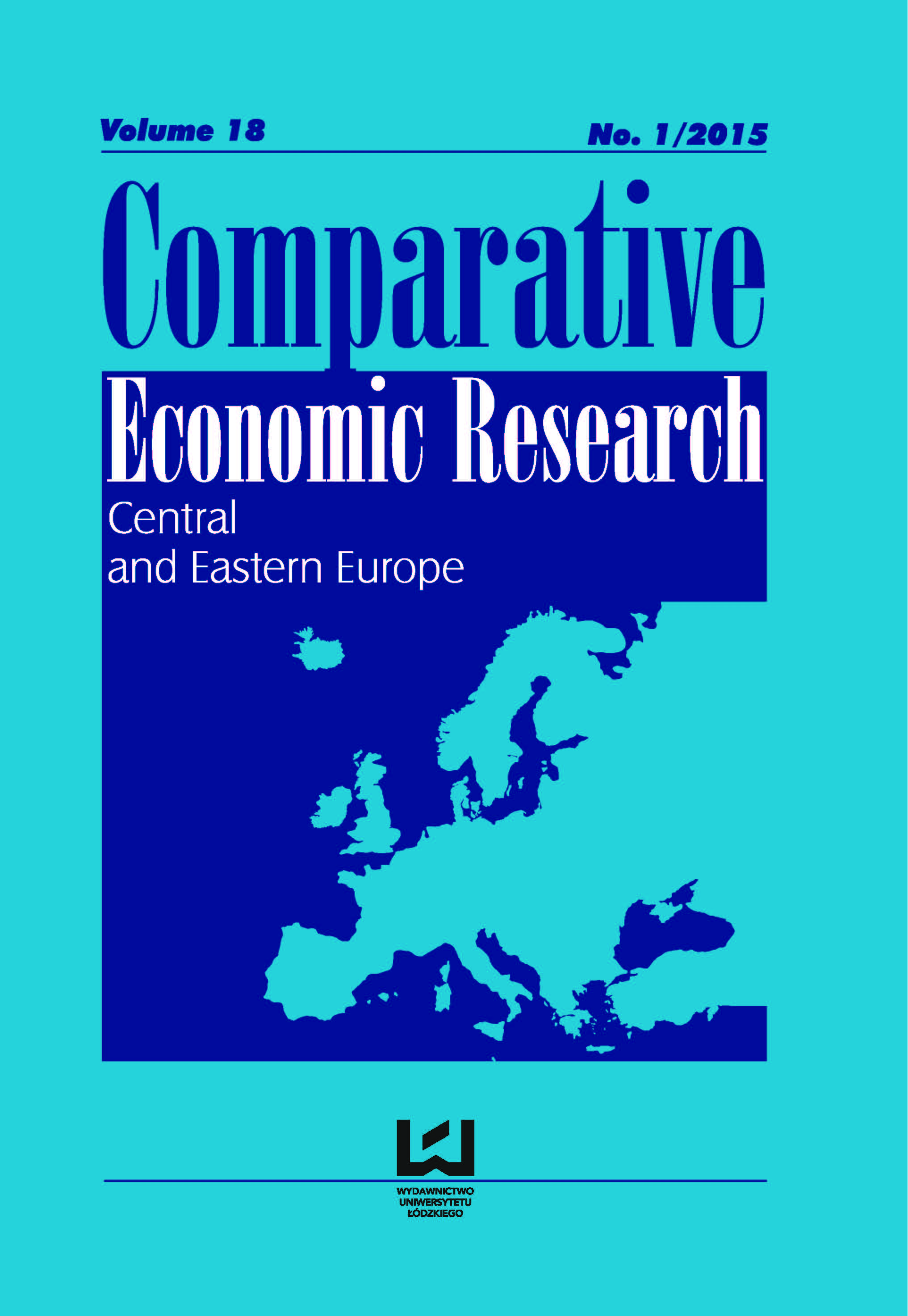Financial And Non-financial Factors Motivating Individual Donors To Support Public Benefit Organizations
DOI:
https://doi.org/10.1515/cer-2015-0008Keywords:
Public Benefit Organisations, Performance measurement, donorsAbstract
This study is aimed at determining how the financial data of public benefit organizations (PBOs) affects donations received by them and if the donors use financial and non-financial information in order to donate. In order to achieve our aim we used different methods of research: quantitative research (econometric model and survey) and qualitative research (laboratory test). The research allowed us to draw the conclusion that Polish donors make very limited use of PBOs’ financial statements in the donation process and that non-financial information plays greater role for donors in making decisions to give charitable donations. The most important information is the organization's goals and descriptions of its projects. At the same time, many donors stated that they donated under the influence of people they knew. This article fits into the scope of world research on PBOs and uses the concept of civil society.
Downloads
References
Andreoni J., & Payne A.A. (2003), Do government grants to private charities crowd out giving or fund-raising? ‘The American Economic Review’, 93(3). doi: 10.1257/000282803322157098
Google Scholar
Archewska M. (2009), Rola i modele fundacji w Polsce i Europie.[Role and models of the Foundations in Poland and Europe], ‘Warsaw: Forum Darczyńców’, Retrieved from: http://www.forumdarczyncow.pl/docs/publikacja_ebook_rola_i_modele_fundacji_w_polsce_i_w_europie_1.pdf
Google Scholar
Archewska M. (2007), Nie tylko jedna ustawa. Prawo o organizacjach pozarządowych. [Not just one Act. The Non-governmental Entities Act], ‘The Institute of International Affairs’, Retrieved from: http://www.isp.org.pl/files/15960887510163470001183731832.pdf
Google Scholar
Bekkers R. (2008), Straight from the heart [in:] ed. S. Chamber, M. Goldner, Advances in Medical Sociology, 10: Patients, Consumers and Civil Society: US and International Perspective, Emerald Group Publishing Limited, ISSN: 1057-6290/doi:. doi: 10.1016/S1057-6290(08)10010-9
Google Scholar
Bekkers R., & Wiepking P. (2011), A literature review of empirical studies of philanthropy: Eight mechanisms that drive charitable giving, ‘Nonprofit and Voluntary Sector Quarterly’, Vol. 40(5). doi: 10.1177/
Google Scholar
Bekkers R., & Wiepking P. (2011a), Who gives? A literature review of predictors of charitable giving Part One: Religion, education, age and socialization,‘ Voluntary Sector Review’, 2(3).
Google Scholar
Bennet R. (2012),What else should I support? An empirical study of multiple cause donation behavior,‘ Journal of Nonprofit & Public Sector Marketing’, 24(1).
Google Scholar
Callen J.L. (1994), Money donations, volunteering and organizational efficiency, ‘The Journal of Productivity Analysis’, 5(3). doi: 10.1007/BF01073908
Google Scholar
Frumkin P., & Kim M.T. (2001), Strategic positioning and the financing of nonprofit organizations: Is efficiency rewarded in the contributions marketplace? ‘Public Administration Review’, 61(3). doi: 10.1111/0033-3352.00029
Google Scholar
Gordon T.P., Greenlee J.S., & Nitterhouse D. (1999), Tax-exempt organization financial data: Availability and limitations, ‘Accounting Horizons’, 13(2). doi: 10.2308/acch.1999.13.2.113
Google Scholar
Greenlee J.S., & Trussel J.M. (2000), Predicting the financial vulnerability of charitable organizations, ‘Nonprofit Management & Leadership’,11(2).
Google Scholar
Hyndman N. (1991), Contributions to charities – a comparison of their information needs and the perceptions of such by the providers of information,‘ Financial Accountability and Management’,7(2).
Google Scholar
Ireland T. R. (1969),The calculus of philanthropy, ‘Public Choice’, 7(1). doi: 10.1007/BF01718731
Google Scholar
Khumawala S.B., & Gordon T.P. (1997), Bridging the credibility of GAAP: Individual donors and the new accounting standards for nonprofit organizations, ‘Accounting Horizons’,11(3).
Google Scholar
Khumawala S.B., Parsons L.M., & Gordon T.P. (2003), Assessing the quality of not-for-profit efficiency ratios: Do donors use joint cost allocation disclosures? ‘Journal of Accounting, Auditing & Finance’, 3(20).
Google Scholar
Kinowska Z. (2012), Kondycja społeczeństwa obywatelskiego w Polsce [The condition of civil society in Poland], ‘Biuro Analiz Sejmowych’, 22(136).
Google Scholar
Noraini M., Radiah O., Jamaliah S., & Erlane K. (2009), Financial reporting practices of charity organisations: A Malaysian experience, ‘International Bulletin of Business Administration’, 6 (2009).
Google Scholar
Parsons L.M. (2003), Is accounting information from nonprofit organizations useful to donors? A review of charitable giving and value-relevance, ‘Journal of Accounting Literature’, 2003 (22).
Google Scholar
Parsons L.M. (2007), The impact of financial information and voluntary disclosures on contributions to not-for-profit organizations, ‘Behavioral Research in Accounting’,19(1).
Google Scholar
Parsons L.M., & Trussel J.M. (2008), Fundamental analysis of not-for-profit financial statements: An examination of financial vulnerability measure,‘ Research in Government and Nonprofit Accounting’,12.
Google Scholar
Posnett J., & Sandle T. (1989), Demand for charity donations in private non-profit markets: The case of the U.K., ‘Journal of Public Economics’, 40(2). doi: 10.1016/0047-2727(89)90002-9
Google Scholar
Szper R., & Prakash A. (2011), Charity watchdogs and the limits of information-based regulation, ‘Voluntas’, 22(1).
Google Scholar
Tinkelman D. (1998), Differences in sensitivity of financial statements users to joint cost allocations: The case of nonprofit organizations, ‘Journal of Accounting, Auditing and Finance’,13(4).
Google Scholar
Tinkelman D., & Mankaney K. (2007), When is administrative efficiency associated with charitable donations? ‘Nonprofit and Voluntary Sector Quarterly’, 36(1). doi: 10.1177/0899764006293176
Google Scholar
Trussel J.M., & Greenlee J.S. (2004), A financial rating system for charitable nonprofit organizations, ‘Research in Government and Nonprofit Accounting’,11.
Google Scholar
Trussel J.M., & Parsons L.M. (2007), Financial reporting factors affecting donations to charitable organizations, ‘Advances in Accounting’,23.
Google Scholar
Waniak-Michalak H. (2010), Obowiązek publikacji sprawozdań finansowych i merytorycznych organizacji filantropijnych-koszty i korzyści społeczne. [The requirements of philantropic organizations to file financial and activity statements of costs and social benefits], ‘Zeszyty Teoretyczne Rachunkowości’, 59 (113).
Google Scholar
Wawrzyński M. (1997), Fundacje w Polsce. [Foundations in Poland], ‘Centrum Informacji Dla Organizacji Pozarządowych Bordo'Retrieved from: http://osektorze.ngo.pl/files/osektorze.ngo.pl/public/pdf/Fundacje/fund_pol.pdf
Google Scholar
Vriens M., Scheer H. R. V. D., Hoekstra J. C., & Bult J. R. (1998), Conjoint experiments for direct mail response optimization, ‘European Journal of Marketing’,32(3/4). doi: 10.1108/03090569810204625
Google Scholar
Downloads
Published
How to Cite
Issue
Section
License

This work is licensed under a Creative Commons Attribution-NonCommercial-NoDerivatives 4.0 International License.











